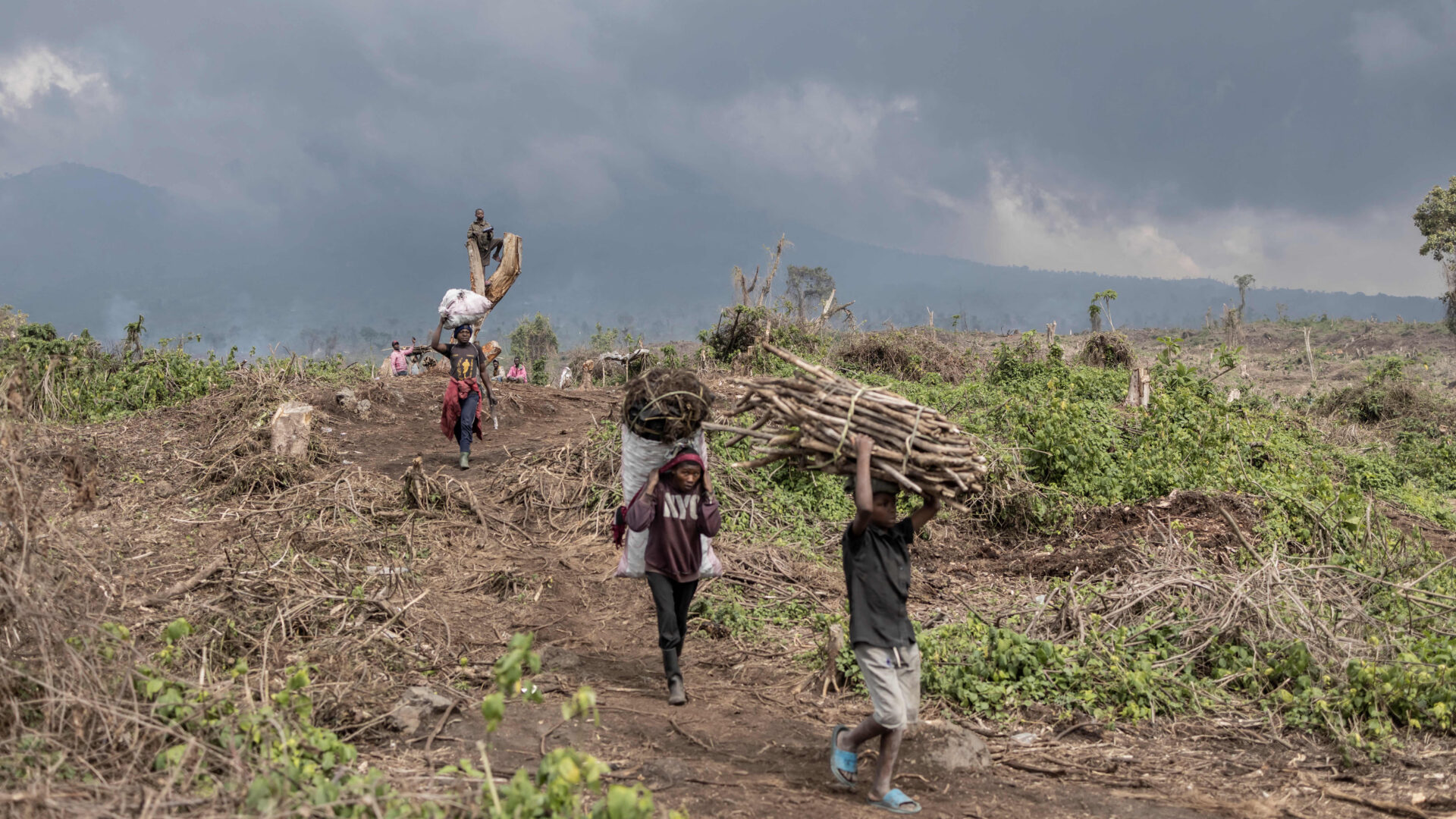The Disappearing “Lungs of Africa”: Deforestation in the Congo Basin
Written by Olivia Nater, Communications Manager | Published: June 12, 2023
As the planet continues to warm, humans are destroying the largest tropical carbon sink[a] in the world due to poverty, conflict, and population growth. The forests of the Congo Basin, in west-central Africa, provide invaluable environmental services, including harboring thousands of species, increasing rainfall in drier regions that desperately need it, and absorbing climate changing carbon emissions. In addition, millions of people depend on the Congo Basin forests for their food and income. As populations grow and encroach upon this remarkable forest landscape in order to expand agriculture, remove timber, mine precious minerals, and hunt wildlife, one of our best tools to fight catastrophic climate change is going up in smoke.
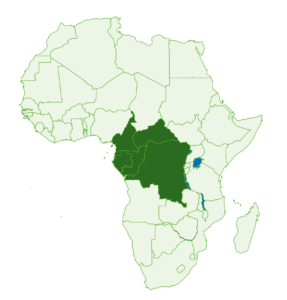 The Congo Basin, named after the Congo River that runs through it, is an area in west-central Africa of approximately 1.3 million square miles (about twice the size of Alaska) that spans across six countries—Cameroon, Central African Republic (CAR), Republic of the Congo (Congo), Democratic Republic of the Congo (DRC), Equatorial Guinea, and Gabon.
The Congo Basin, named after the Congo River that runs through it, is an area in west-central Africa of approximately 1.3 million square miles (about twice the size of Alaska) that spans across six countries—Cameroon, Central African Republic (CAR), Republic of the Congo (Congo), Democratic Republic of the Congo (DRC), Equatorial Guinea, and Gabon.
The area, often referred to as the “Lungs of Africa,” has special environmental significance as it covers close to 70 percent of the forestlands of the entire African continent. The Basin’s tropical forest is the second largest in the world, after the Amazon rainforest.
The Congo Basin countries are some of the poorest in the world, especially the two largest by land area, DRC and CAR, which respectively rank 179th and 188th out of all countries on the Human Development Index, a summary of achievement in key dimensions of human development, including health, education, and standard of living. Annual GDP per capita ranges from $461 in CAR to $8,635 in Gabon.
Environmental significance
The Congo Basin includes a rich diversity of ecosystems, including dense tropical forests, dry forests, peatlands, and mangroves. This makes it an amazing biodiversity hotspot—an estimated one in five recorded species is found in the Congo Basin.
Unlike the Amazon rainforest and the tropical forests of Indonesia, which have suffered large-scale, industrial deforestation for decades, the forests of the Congo Basin are still relatively intact. The Congo Basin is now the largest net carbon sink in the tropics, making it a critical weapon in the global fight against climate change and its impacts.
Rainforests also play an important role in regulating climates by releasing moisture into the atmosphere via transpiration and lowering surface temperatures through increased humidity and shade. The Congo Basin is a major source of rainfall in the drought-stricken Sahel region, where every drop is key to maintaining food production.
Economic and cultural significance
Around 60 million people living in or near the Congo Basin forests derive their livelihoods directly from the goods and services provided by the forest ecosystems, including through hunting, fishing, agriculture, and the sale of forest products, such as timber and bushmeat. The forest also provides livelihoods for another 40 million people living in nearby urban centers.
The forests are home to several Indigenous hunter-gatherer tribes, including the Aka, Babenjelle, Babi, Babongo, Bacwa, Bagyeli, Baka, Bakola, and Bakoya (previously collectively referred to as “Pygmies” due to their small stature). Another group, the Mbororo, are nomadic herders.
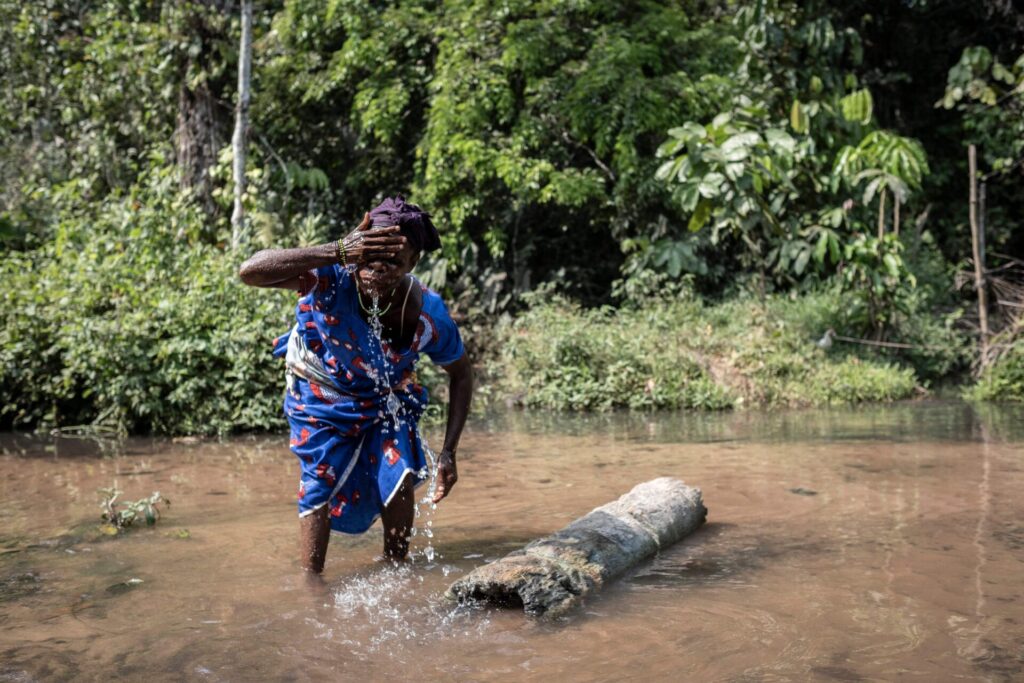
Drivers of forest loss in the Congo Basin
Unfortunately, deforestation in the Congo Basin is on the rise[b]. While in the Amazon, the primary cause of forest loss is large-scale cattle ranching and soybean cultivation, and in Indonesia, it’s industrial palm oil production and forestry, the situation is different in the Congo Basin. A 2018 study published in Science Advances found that 84 percent of the forest loss in the region between 2000 and 2014 was due to small-scale, non-mechanized farming and clearing for charcoal production by local communities. Most of this is rotational agriculture, which involves sequentially planting different crops on the same plot of land.
On an individual basis, small-scale agriculture is of course much less destructive than industrial operations, but such a high proportion of people deriving their sustenance and livelihoods directly from the forest, combined with rapid population growth (see Table 1), is threatening the future of the Congo Basin rainforests. In 2023, the total population of the region is approximately 147 million, and this figure is projected to double by 2050, which makes continued deforestation likely. The Science Advances authors warn, “Under the assumption that population growth continues to correlate with the increase in annual primary forest loss area, all of DRC’s primary forests will have been cleared by 2100.”
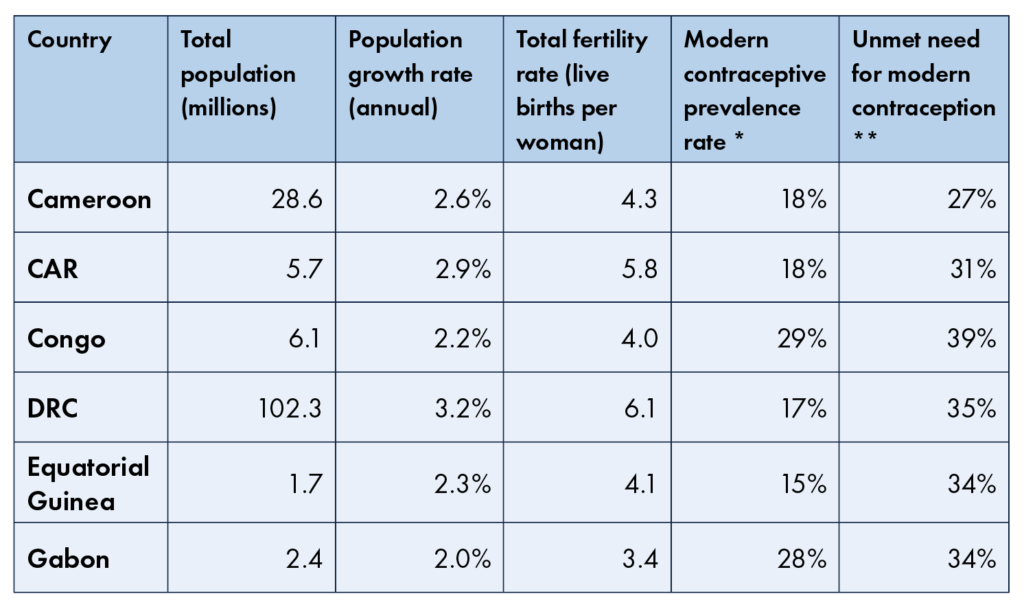
After small-scale agriculture, industrial logging was found to be the second most important driver of forest loss in the Congo Basin, followed by fires, most of which were presumed to be escaped agricultural fires or fires set for hunting purposes due to their proximity to human activities.
The next most important driver was infrastructure development, including road, residential, and commercial construction, then large-scale clearing for agriculture, responsible for less than 1 percent of the overall forest loss in the Congo Basin, with more than half of this occurring in Cameroon.
Natural disturbance from wind and river meandering was estimated to account for around one-tenth of a percent, and mining was determined to be a relatively rare cause of forest disturbance, driving only 0.04 percent of the total forest loss in the region.
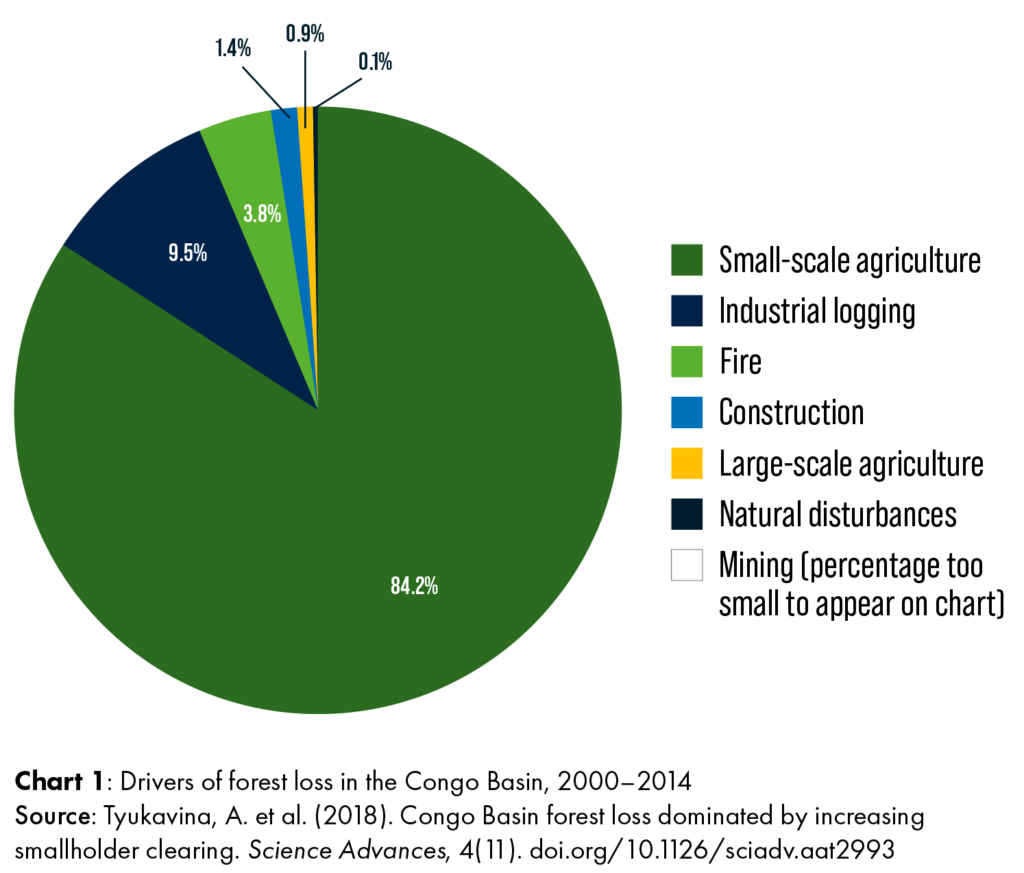
Many of these less significant drivers are expected to become increasingly important under the countries’ push for economic growth, however. The soils of the Congo Basin are rich in fossil fuels as well as precious minerals, including copper, gold, diamonds, cobalt, uranium, and coltan—naturally, the economic benefits of exploiting these are incredibly tempting. A 2022 assessment by the Forest Declaration Platform found that oil, gas, and mining permits impact up to 48 percent of intact forest landscapes in some countries, including CAR, Congo, DRC, and Gabon. In addition, nearly one-third of the region’s logging concessions overlap with protected areas.
The risk of agricultural expansion into forested areas is also particularly high in Cameroon, Congo, DRC, and Gabon because of their high percentage of forest cover and relatively low availability of arable land outside of forested areas.
Climate change, too, will increasingly impact the forest ecosystems through increased drought and fire frequency and severity.
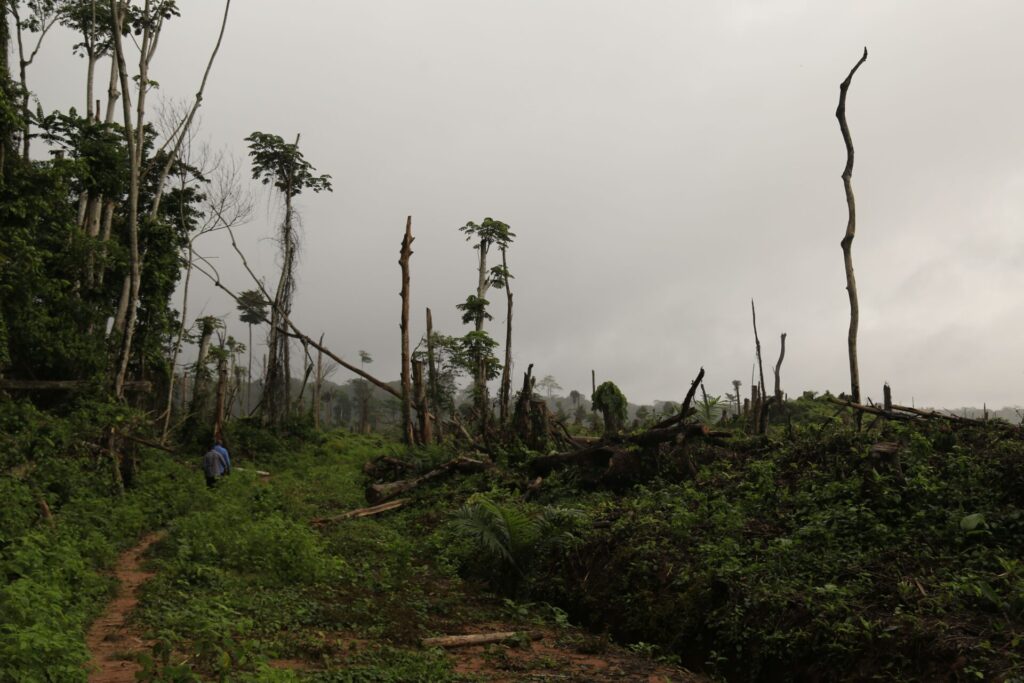
Zoonotic disease risk
Deforestation, forest degradation, and other human activities that harm the Congo Basin’s ecosystems (such as extensive hunting and poaching) also pose a significant threat to people due to the risk of disease transmission from wild animals to humans. Between 1996 and 2009, more than half of new infectious diseases emerged in Africa. As humans and their livestock encroach into forests, they come into contact with wild species which sometimes harbor viruses that can pass to humans. The first outbreak of Ebola occurred in DRC (then Zaire) in the 1970s, in a village near the Ebola River, which gave the virus its name.
Consumption of wild animals (bushmeat), is particularly risky, but in the Congo Basin, bushmeat is an important source of protein and income for many people, and with rapid population growth and increasing household purchasing power, demand for it has been rising.
Poor governance and conflict
Extreme political instability in the Congo Basin exacerbates all of its problems. The current civil strife dates back to the end of the Rwandan genocide in the mid-90s, when fleeing armed groups crossed the border into eastern DRC. Ethnic tensions between groups (which also underpinned the Rwandan genocide and were fueled by the region’s brutal colonial past) led to the First and then the Second Congo War, involving several neighboring countries. The Congolese government failed to control the rebels, and despite a peace deal in 2002, extreme violence perpetrated by armed groups—including indiscriminate killings, mass rape, and abductions—has continued unabated. M23, the most notorious rebel group, which was defeated by the military in 2013, re-emerged in November 2021 and now occupies large parts of DRC’s North Kivu province, committing serious human rights violations.
Death toll estimates vary widely but are in the millions, making it the deadliest conflict since World War II. According to the United Nations, DRC had 5.8 million internally displaced people as of March 2023, which makes it the largest internal displacement crisis in Africa. More than a million refugees and asylum seekers have fled DRC to other countries, mostly neighboring Uganda. Efforts to deliver aid are hampered by ongoing violence and lack of funding.
Due to widespread conflict, corruption, and lack of state support, people in DRC have been forced to espouse extreme self-reliance. As noted by the 2018 Science Advances study, “In terms of land cover and land use change, self-reliance in response to statelessness is evident in elevated forest disturbance rates compared to other Congo Basin countries, as the entire rural population attempts to eke out a subsistence livelihood.”
While overall, the Basin’s countries have made progress on establishing legal and institutional frameworks for forest management and protection, their ambition and implementation is insufficient. As in other parts of the world, governments’ economic development plans conflict with the need to preserve the environment and protect the rights of Indigenous peoples and local communities.
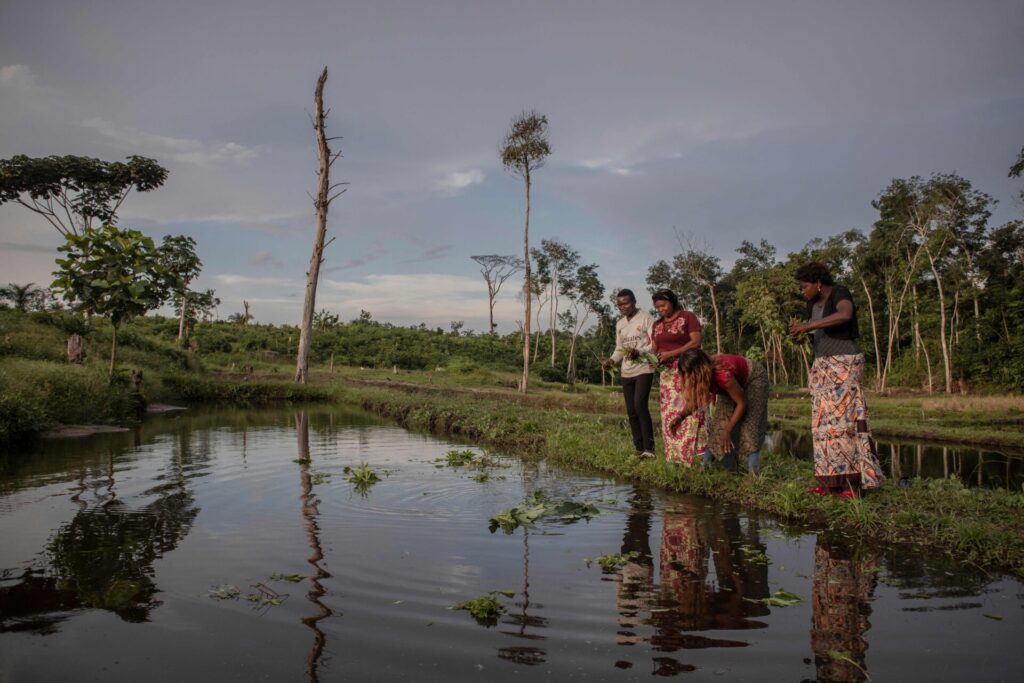
Funding shortfalls
At the 2021 COP26 climate conference in Glasgow, Scotland, a group of 12 donors, including the European Commission, the United Kingdom, the United States, and the Bezos Earth Fund, pledged to raise at least $1.5 billion for Congo Basin forest conservation between 2021 and 2025. An additional $500 million from 2021 to 2026 was agreed upon through a letter of intent between the Central Africa Forest Initiative and DRC. However, the 2022 Regional Assessment by the Forest Declaration Assessment points out that these financial pledges are rarely accompanied by quantifiable and transparent targets, and they represent only a fraction of what is needed.
Also at COP26, more than 140 countries (including the six Congo Basin nations) committed to ending deforestation and land degradation globally by 2030. Recent funding commitments, however, meet less than 1 percent of the estimated $460 billion per year needed to protect and restore the world’s forests in line with the Paris Agreement’s target of limiting global warming to 1.5°C. There is no estimate for investments needed specifically for the Congo Basin, but as the second largest tropical forest and the largest carbon sink, it will require a significant portion of this sum. An analysis by the Central African Forest Observatory found that, between 2008 and 2017, Central African forests received only around 11 percent of international financial flows for tropical forest conservation.
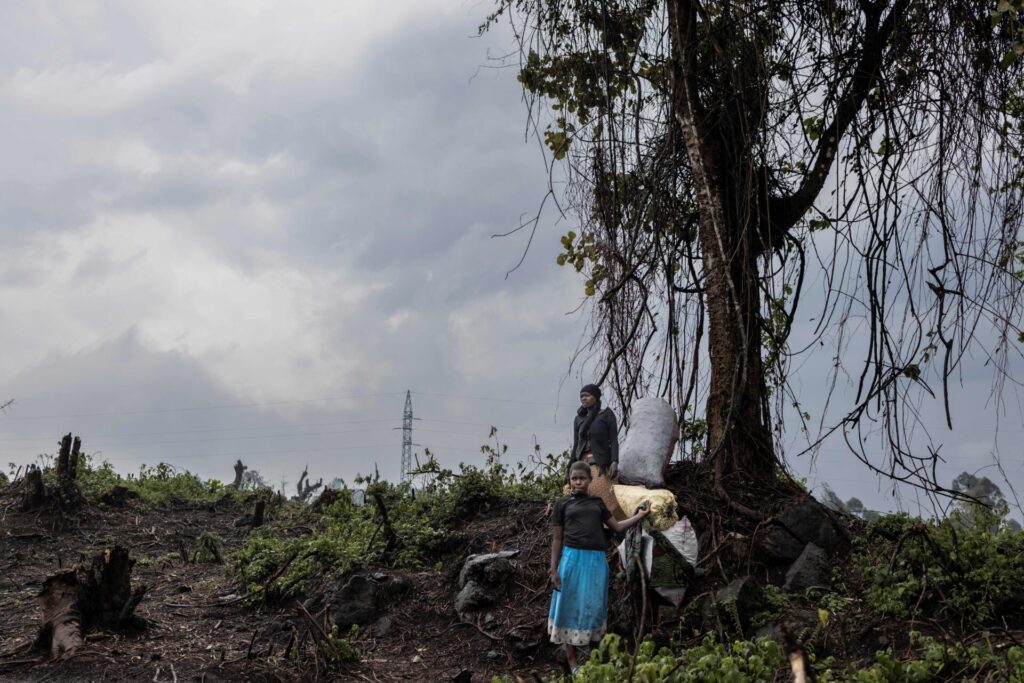
Ensuring the future of the Congo Basin
Saving the Congo Basin will require a lot more than just expanding protected areas. Badly designed conservation measures can in fact harm local people, as demonstrated by reported human rights abuses, including physical violence, sexual assault, and threats against Baka tribespeople in Congo perpetrated by park rangers employed to protect the forest. To be effective, fair, and sustainable, forest conservation efforts must benefit local communities. This is of course challenging when such a large and growing number of people obtain all of their food, cooking fuel, building materials, and income directly from the forest. For this reason, Congo Basin financing must also support efforts to reduce conflict and poverty and to improve access to education and family planning.
To make lasting progress in the Congo Basin, the international community must come together and boost the financial and human resources available to protect the Basin’s ecosystems and people.
If we allow the “Lungs of Africa” to atrophy and disappear, our future on this planet will look bleak indeed. As summarized by the authors of the State of the Forests 2021 report:
The continuity of the human species depends on the sustainable management of these rather fragile ecosystems. The fate of the Congo Basin forests must therefore be viewed as a joint responsibility of the Central African countries and of the international community, which have all for long benefited from these forests and placed their hopes in them for a secure future and a shared well-being.
[a] The forests of the Congo Basin removed an estimated 0.61 net gigatons of CO2 equivalent emissions per year between 2001 and 2019—nearly six times the net removals of the Amazon Basin forests, which cover almost three times as much area, and equivalent to about one-third of the CO2 emissions from all U.S. transportation.
[b] The latest State of the Forests report by the Center for International Forestry Research (CIFOR) found that in 2021, deforestation in the Congo Basin increased by 30,000 hectares (or 4.9 percent) compared to the 2018–20 period, reaching a total of 636,000 hectares. Forest degradation and fragmentation are increasing also, threatening forests’ integrity and their ecological processes. Between 2000 and 2016, the share of intact forests in the Basin decreased from 78 percent to 67 percent, representing a degraded area of about 23 million hectares. The report found that in DRC, which holds 60 percent of the entire Congo Basin rainforest area, the current rate of deforestation could result in a 33 percent loss of the country’s intact tropical forests by 2050.
Endangered Regional Megafauna
So far, 20,000 species of plants, 1,300 species of birds, 400 species of mammals, 400 species of reptiles, and 336 species of amphibians have been recorded in these forests. Many of these species are found nowhere else on Earth and are classified as threatened on the International Union for Conservation of Nature’s (IUCN) Red List.
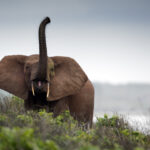 Forest elephants: African forest elephants are classified as Critically Endangered on the IUCN Red List, as more than 80 percent of the population is estimated to have been lost since 1984. They are particularly vulnerable among African elephants as they have a very long generation time (31 years), meaning they recover from population reductions three times more slowly than savanna elephants. Over 50 percent of forest elephants are now found in the small Congo Basin country of Gabon.
Forest elephants: African forest elephants are classified as Critically Endangered on the IUCN Red List, as more than 80 percent of the population is estimated to have been lost since 1984. They are particularly vulnerable among African elephants as they have a very long generation time (31 years), meaning they recover from population reductions three times more slowly than savanna elephants. Over 50 percent of forest elephants are now found in the small Congo Basin country of Gabon.
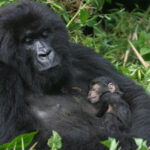 Gorillas: The Congo Basin is home to both species of gorilla, western and (to a lesser degree) eastern, both of which are listed as Critically Endangered. They are our second-closest living relatives, sharing 98 percent of their genetic code with humans. While both species are declining in numbers, at around 300,000, western gorillas are overall better off than eastern gorillas, of which fewer than 5,000 are thought to remain.
Gorillas: The Congo Basin is home to both species of gorilla, western and (to a lesser degree) eastern, both of which are listed as Critically Endangered. They are our second-closest living relatives, sharing 98 percent of their genetic code with humans. While both species are declining in numbers, at around 300,000, western gorillas are overall better off than eastern gorillas, of which fewer than 5,000 are thought to remain.
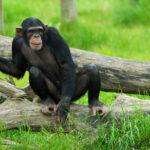 Chimpanzees: Chimpanzees, along with bonobos, are our closest living relatives, sharing approximately 99 percent of our DNA. They are found only in the forests of western and central Africa, and are listed as Endangered by the IUCN, which estimates that fewer than 300,000 remain in the wild.
Chimpanzees: Chimpanzees, along with bonobos, are our closest living relatives, sharing approximately 99 percent of our DNA. They are found only in the forests of western and central Africa, and are listed as Endangered by the IUCN, which estimates that fewer than 300,000 remain in the wild.
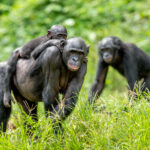 Bonobos: Smaller and more peaceful than chimpanzees, bonobos are our other closest living relative. Bonobos are also listed as Endangered and can only be found in DRC. It is not clear how many bonobos remain because survey efforts have been hampered by the remote nature of their habitat and years of civil unrest.
Bonobos: Smaller and more peaceful than chimpanzees, bonobos are our other closest living relative. Bonobos are also listed as Endangered and can only be found in DRC. It is not clear how many bonobos remain because survey efforts have been hampered by the remote nature of their habitat and years of civil unrest.
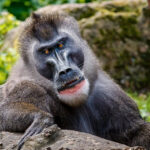 Drills: With a relatively small and very fragmented habitat in western Cameroon, southeast Nigeria, and Bioko Island in Equatorial Guinea, drills are considered Endangered, with only an estimated 4,000 individuals remaining in the wild.
Drills: With a relatively small and very fragmented habitat in western Cameroon, southeast Nigeria, and Bioko Island in Equatorial Guinea, drills are considered Endangered, with only an estimated 4,000 individuals remaining in the wild.
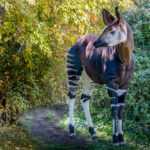 Okapis: The giraffe’s only close living relative, the okapi is classified as Endangered by the IUCN. Like bonobos, they are now only found in the rainforests of DRC, and their current population size is unknown but thought to be decreasing.
Okapis: The giraffe’s only close living relative, the okapi is classified as Endangered by the IUCN. Like bonobos, they are now only found in the rainforests of DRC, and their current population size is unknown but thought to be decreasing.
All wildlife photos on this page are royalty free, purchased from Dreamstime.com.

